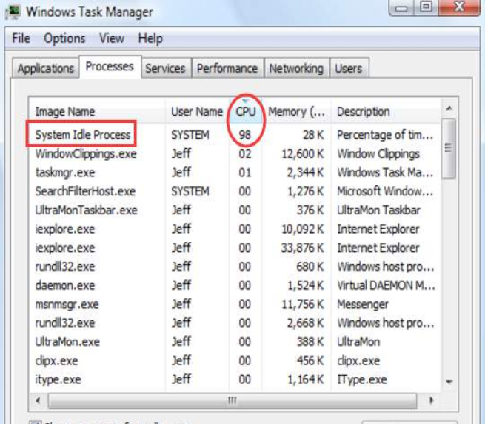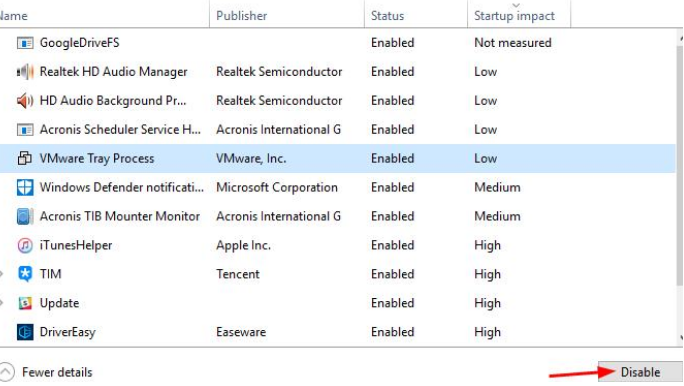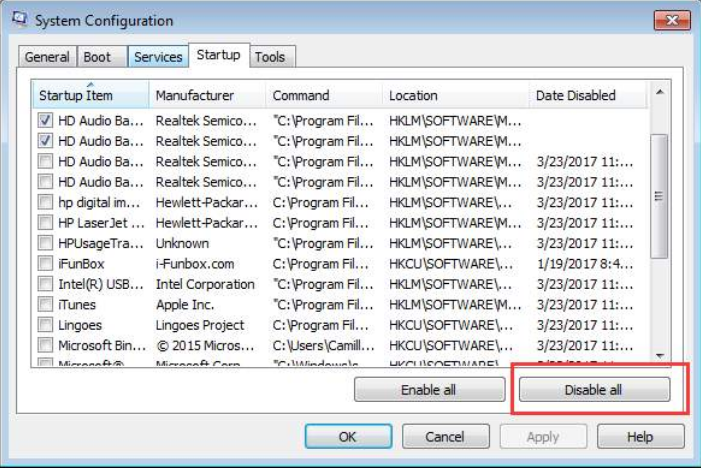Is your PC running at a snail’s pace? Does it freeze often and without any good reason?
If yes, you should open the Task Manager, as it is possible that System Idle Process is the culprit.

You can check the amount of CPU usage of System Idle Process by performing these steps:
- Press ctrl+alt+del
- Click Start Task Manager
- In the Windows Task Manager window, click Processes
- Browse to the through the list until you locate System Idle Process. You can see its CPU usage next to it (in the third column)
Note: Your PC doesn’t slow every time when System Idle Process CPU usage is high. When your pc is idle, as well as at other times, System Idle Process can report high usage. As long as there’s no issue with your system’s performance, you don’t have to do anything about its high CPU usage. However, if the performance of your PC suffers, of course, take necessary steps discussed in this post.
Why System Idle Process shows high CPU usage?
As the name suggest, System Idle Process measures the amount of idle capacity the system has at a particular point in time.
When the CPU usage is high, it typically means that a lot of processing power is not being used. Therefore, when System Idle Process records 100% or 99% or 98% CPU usage, you may find that no process is running in background and using CPU resources. In this case, as said above, you don’t need to do a thing.
However, at times, for inexplicable reasons, when System Idle Process reports high CPU usage, the system becomes painstakingly slow or freezes all together.
If that’s happening in your case, too, try these two solutions.
First Solution – Disable unwanted Startup processes
Many processes are by default configured to load automatically with Windows. However, you may not require all of these processes to load at startup. You can safely disable those which you don’t need any more.
We’ve shown the steps to disable startup processes for both Windows 10 and Windows 7 users.
Windows 10 Users
Perform these steps to disable startup processes.
- Press Win+R
- This will open the Run dialog box. Now type msconfig in it and then press Enter
- Click the Startup tab and then click Open Task Manager
- In the list, select an item which you don’t require to load with Windows at startup. Then click Disable
- Repeat the last step to disable each and every item which you don’t need to start automatically when Windows load
- Restart Windows
- Now check if your computer’s performance has improved
Windows 7 Users
Perform these steps to disable startup processes.
- Click the Windows icon in the taskbar and then type run in the start search box and press Enter to open the Run dialog box.
- Here type msconfig and then press Enter
- In the System Configuration window click the Startup tab
- Select the item you don’t need to load automatically at startup and then select Disable all
- Now repeat the previous step to disable each and every item which you don’t need to start automatically when Windows load
- Restart Windows
- Now check if your computer’s performance has improved
Second Solution – Update Device Drivers
It is a known fact that outdated or corrupt device drivers can cause all sorts of problems. It is possible that this issue in your case is because of this reason. Therefore, our recommendation is to use a fast and accurate driver update tool to keep your device drivers up-to-date.
Automatic driver update tools offer many benefits, the most important ones being:
- You can update device drivers automatically
- The software scans and updates all outdated or missing drivers at one go
- The tool picks the right drivers for your device and operating system, so you won’t have to worry about installing an incorrect driver by mistake
- Automatic driver updates are 100% safe
Driver Updater is one of the best driver update tools out there. Outbyte Driver Updater will give you access to a database of over 1 million drivers. It will regularly scan your PC, suggesting new driver versions to install. Driver Updater contains drivers for a variety of Windows devices. With just one click, you can update drivers in your system.
Step 1
Click here to Install and launch the app
Step 2
Scan all devices
Step 3
Install or update drivers automatically



Leave a Reply